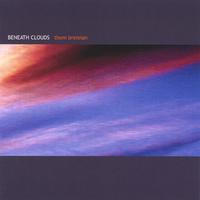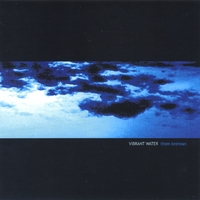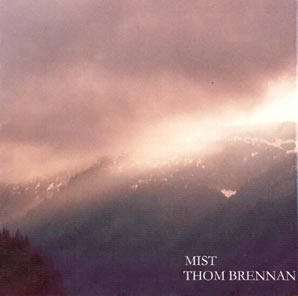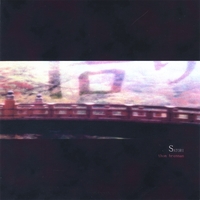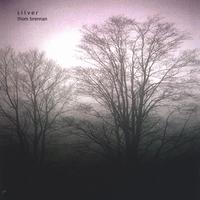Velvet, highly cinematic soundgardens: the music of Thom BrennanDate: Sept. 9 2007 |
||
| More than anything else, Thom Brennan’s music is (and always has been) inspired by nature, seasons, landscapes and environments. In his early years it was the Sonora and Mojave Deserts. Later in the 70;s its was Tucson in Arizona, followed by Southern California for the next 15 years. In those days, the desert was the place he would go for inspiration. In the mid 70s, Brennan developed an interest in electronic music, listening to Morton Sobotnik, Tomita, and the early Berliner School styles of Tangerine Dream and Klaus Schulze. But probably the most influential was the output from the German band Popol Vuh, in particular the track “Vuh” from the early ‘70s. It was through their music Thom Brennan discovered the films of German film maker Werner Herzog, whose incredible visual images turned on his interest in the visual impact of nature. Thom recalls Popol Vuh often created a sense of movement without motion in their music. “Vuh” was a perfect example, with its sustained organ tones remaining almost motionless against the backdrop of frantic percussion.In addition, Thom also spent time studying the microtonal pattern music of minimalist pioneers Terry Riley and Steve Reich next to Lamont Young’s “just intonation” piano works. Thom’s output was especially influenced by Riley’s live improvisations on electric organ and tape loops. Over the years his music has developed into highly visual soundscapes and rhythmic journeys which rarely contain percussion sounds, any acoustic instruments whatsoever nor any samples. Above all, Thom prefers an organic quality to the sound which features movement within the timbre, something he feels for many years was hard to achieve with digital synthesizers.The first steps Thom Brennan took toward electronic music occurred when he was attending Film school at California State University. But while doing this, Brennan really found he was thinking, more and more, in terms of sound. A very visual sorts of sound, which were all about atmosphere. It was at that time he met Steve Roach, with whom he started getting together at his Los Angeles Studio back around 1982. Thom was just setting up an e-music studio using this older Roland modular stuff and an organ.Around 1985 or so he started working on what would end up being his first album “Mountains”, recorded on a 2 track stereo cassette deck. The music was done largely on two Yamaha DX-5 FM synthesizers, an Oberheim Matrix 12 and a Prophet 5. The album came out as cassette only version in 1987. He recorded the music at home, and then took the cassette masters to Steve for the addition of reverb, and some further sound processing. Thom and Steve just finished “Mountains” when they composed the extended track “In The Heat of Venus”, not music later followed by another shorter track “New Moon at forbidden Mesa”. Both tracks would end up on the concept-album “Western Spaces” with Steve Roach. 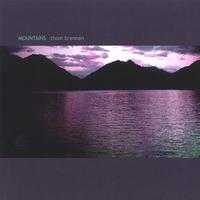 Steve taught Thom about the quality of sound, the silence behind it, the importance to the overall music. The silence between notes, or the musician behind the field of music, is equally important. In that period, Steve and Thom were getting together almost weekly for a mix of fun and work. They would usually go out and after a few beers, go back to his studio and either listen to stuff they were independently working on, or improvise some recordings. Steve taught Thom about the quality of sound, the silence behind it, the importance to the overall music. The silence between notes, or the musician behind the field of music, is equally important. In that period, Steve and Thom were getting together almost weekly for a mix of fun and work. They would usually go out and after a few beers, go back to his studio and either listen to stuff they were independently working on, or improvise some recordings.“In the Heat of Venus”, was done that way. It happened on a really hot day, of which Thom recalls most of the composition was improvised live around the opening drones on an Oberheim Matrix 12. Later they did “New Moon on Forbidden Mesa”, which was based around a small chord progression Thom did. As a matter of fact it’s a really simple piece, creating a strong mood. In the meanwhile “Mountains” started gaining some media attention as it was released on the (now defunct) Canadian Rubicon-label. In 1993 Steve Roach asked Thom to produce a 20 minute track for the Italian Amplexus label. The music was extracted out of a longer 30 minute track and released as the mini-cd “The Path Not Taken”. Brennan recorded it at home in San Francisco and sent it to Steve. He edited it to the 20 minute length and the music went to Amplexus. In 1996 the label accepted “Beneath Clouds” as a full album release.
During the period 1991 to 1996, Thom recorded hundreds of hours worth of music. He had recently moved to San Francisco and was working with a decent home studio. Since the 20 minute “The Path Not Taken” came out, Thom killed plans for its album version, but years after that he started work on it from scratch. Beside that, Thom had also actually recorded about four versions of “Beneath Clouds”, some quite different from the final release. Brennan released an edited version of it through mp3.com, and Emusic.com, but he personally thinks the edited version is better as there were some dead moments on the full version. On both “The Path not Taken” and “Beneath Clouds” Brennan used a Korg 01-W Pro-X (a large 8-octave weighted keyboard station) and a Korg Wavestation. From 1996 to 1999 Thom got in period with a lot of personal stress. Part of it had to do with a move from a house into a tiny apartment, with hardly enough room to set up a studio. Actually, Thom did not record a single note of music between those three years. He had a single Korg Wavestation set up in his living room on which he would play out ideas on, but no recordings. Finally in late 1998, he recorded a 30-minute series of chord progressions on the Wavestation direct to a portable DAT-recorder, which later became the basis for the track “Vibrant Water”. Unfortunately Thom had to deal with a lot of personal issues at that time that interfered with the right mind set to create music.
In late 1999, Thom Brennan “escaped” from his twenty-plus years of life in California and moved to Seattle. Brennan experiences the American Northwest as an amazing place, which he says shares a lot in common with the European North-West. He started re-building his studio, making it all digital recording. Between 2000 and 2001 he recorded enough material to make up for the lost time between ‘96 and ‘99.
It was like the release of water from behind a flood gate, resulting in the albums “Mist”, “Vibrant Water”, “Secret Faiths of Salamanders” (=“Strange Paradise”) and “Shimmer”. For most of the albums since “Mist” Brennan used the Roland XP-80 and Korg Triton.
“Mist” for example was recorded completely live, with no use of sequencers nor overdubs. Although the album only has 2 synthesiser, Thom layered about 32 digital tone generators on top of one another to create the intense textures he had in mind. In addition, Thom decided to use the internet for distribution, something he dreamt of
For his album “Silver” (which had the working title “The Fall of Winter”) Thom was looking for icy, glistening sounds from where he developed the timbres, which usually inspire the melodic themes. He started work on it in winter 2003, and finished it in winter of 2004. All music was done almost entirely on the Roland Fanthom S and the Korg Triton, and Thom spend a lot of time on the sound development side. At the start of 2004 Thom launched his own label Raingarden Music. This new online sales office re-issues all past releases, which are different from the previous ones. For this purpose he chose 2 new on demand publishers to create the cds , and made full use of the superior design and audio. Thom: “Those cd manufacturers produce very professional, high quality cds on demand- meaning they are “burned” when ordered. But I am leaning towards doing future releases as “pressed” standard cds , as opposed to cd-r, but with the advances in cd-r technology and the rapid growth in I-Tunes and Mp3’s, I am not convinced that it is the way to go. The cd-r’s I use have 70 – 100 year lifespans, about the same as a mass produced “pressed” cd, and the packaging is equal quality, so it seems to me to be irrelevant if it is a cd or cd-r. But some people are picky about that- so I may make that change for future releases”. In addition, Brennan’s new website features hours of non-repeat streaming ambient music which everyone can check out for themselves. Spring 2006 saw the release of “Vista 1” and “Vista 2”, an on-line exclusive, virtual double album in Mp3 format, featuring over 2 hours of new and unreleased shorter tracks of the last 6 years. He also completed the album “Alaskan Highways” (formerly announced as “Northern Lights”). Discography: Mountains (1986), The Path Not Taken (1995) (cd-single), Beneath Clouds (1996), Mist (2001), Vibrant Water (2001), Secret Faiths of Salamanders (=Strange Paradise), Shimmer (2001), Satori (2002), Signals in Moonlight (2003), Silver (2005), Vista 1 &2 (2006) Collaborations: Western Spaces (with Steve Roach) Website: www.thombrennan.net |
||

